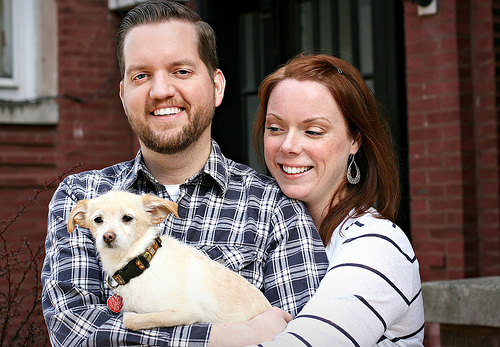June 11, 2013
There are a ton of different methods which gives the illusion that there are countless ways to train a dog. Despite that impression, the fact is that training basic dog behavior falls into one or a combination of three categories: 1) Lure-Reward, 2) Compulsion-Praise, and 3) Marker-Training.

I’m 6 days away from a loooong overdue vacation, meaning I’m working as productively as possible to get as much out of every day before taking off. We found this great, dog-friendly farmhouse in Leelanau County, MI. The amount of hammock-ing Mark and I will be participating in will be insane. And Chauncey will meet chickens for the first time in his life, which I will document thoroughly.
Moving on and back to dog blog topics!
Here’s the scene: you have a dog. The dog needs a trainer. You begin Googling. And your brain explodes.
Today’s post is going to help you to understand different training methods. This article is piggybacking on my recent blog series, the “5 Causes Of Most Dog Problems.”
Dog Training is for two general purposes – “do” and “don’t”. Your “do’s” are your basic manners like sit, down, come, stay, and polite leash walking. The other reason to train (your “don’ts”) help prevent your dog from stealing your kid’s food, running away, pulling on their leash, or jumping on guests.
There are a ton of different methods which gives the illusion that there are countless ways to train a dog. Despite that impression, the fact is that training basic dog behavior falls into one or a combination of three categories: 1) Lure-Reward, 2) Compulsion-Praise, and 3) Marker- Training.
Here is a brief description of each:
- Lure-Reward Training – The trainer will entice your dog into a desired position by holding something, like a treat. For example, the trainer lures the dog to sit by placing a treat in front of his nose and moving it backwards over his head. The dog follows the treat or “lure” into the desired position. Reinforcement is generally giving the food reward along with verbal praise at the completion of the desired behavior.
- Compulsion-Praise Training – The trainer manipulates your dog into a position by using physical placement or training equipment. For example, the dog may be physically manipulated into sitting by applying pressure on his rear or brought into heel position with a head halter or collar correction. Reinforcement may be verbal praise and/or a food reward.
- Marker-Training – The trainer uses a sound, word, or clicker to ‘mark’ or immediately indicate the moment a dog is correct with a behavior. For example, the moment the dog’s butt hits the floor in a sit, a trainer would use his desired marker to tell the dog that was the right behavior. A marker is followed by reinforcement with food and/or verbal praise. The marker creates a brief separation between food or touch and the performance of the behavior, so food is a reward, not an enticement. Behaviors can be either shaped, captured or lured using a marker. P.S. This is Chauncey’s preferred method.
Judge the approach that’s best for you and your dog
Reward-based trainers may employ combinations of any and all of the above from time-to-time; both “do” and “don’t do.” It is the prevalence of the trainer’s approach that defines the method they use. Consider this information when talking to trainers to find the right one for you to determine if a trainer’s approach and philosophy are compatible with your personal philosophy, your needs, your dog’s temperament, and especially the enhancement of your relationship with your dog.
Let’s hear from you! Leave a gal a comment, a question, a concern! I really love hearing from you.
- What training approach works best for you and your dog?
- What did you look for in a trainer and what did you value about that person?
Thanks for stopping by and giving us a read. Next week this blog series wraps. Our final topic will be on exercise! Work it girl!
Image by Sera Hayes

Recent Comments